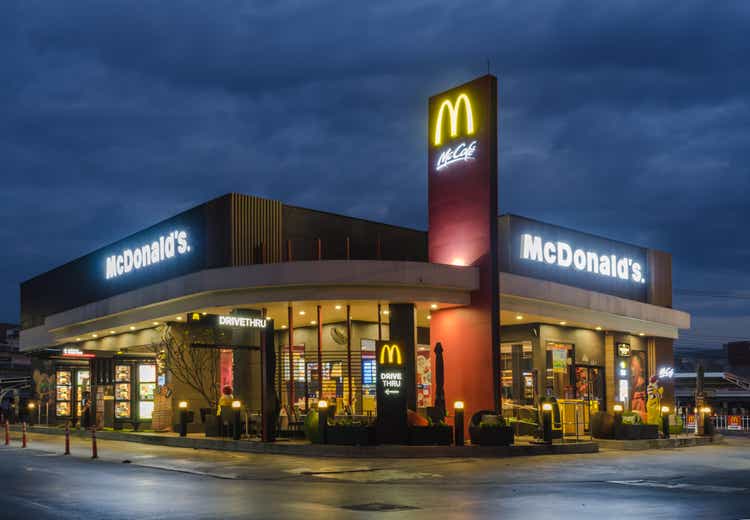
tofumax/iStock Editorial via Getty Images
McDonald’s (NYSE:MCD) Big Arch sandwich is anticipated to be a substantial addition to the company’s menu and a potential threat to hamburger chains rivals such as Burger King (QSR), Hardee’s, Wendy’s (WEN), Jack in the Box (JACK), and Shake Shack (SHAK). The Big Arch features two 100% Canadian beef quarter-pound patties and three slices of white processed cheese. It is topped with crispy onions, slivered onions, pickles, lettuce, and a new tangy sauce, all served on a sesame and poppy seed bun. Notably, the Big Arch sandwich is nearly double the size of the Big Mac. The nutritional scorecard for the Big Arch indicates that it has 1030 calories, 52 grams of protein, total fat of 66 grams, trans fat of 2 grams, and 1980 milligrams of sodium. Currently available in select international markets like Canada and Portugal, the Big Arch is designed to satisfy larger appetites with its enhanced flavors and size.
TD Cowen analyst Andrew Charles tested the Big Arches sandwich at a McDonald’s (MCD) location in Toronto. He said the firm’s view is that the sandwich does not fail on McDonald’s (MCD) intention to deliver a larger burger to hungrier consumers.
“We were most impressed by the Big Arch sauce that tasted of Dijon mustard with a mayonnaise consistency that offered a hint of garlic; as well as the poppy & sesame seed bun that invoked the taste, though not the texture, of an everything bagel.”
The Big Arch sandwich costs CAD$11.29 ($8.31) in Toronto, which is near the midpoint of a single and double ShackBurger in the region. Charles and his team noted that they look forward to when the burger comes to the U.S., although McDonald’s (MCD) has been noncommittal whether it will be introduced in 2025 or later.
Separately, anecdotal reviews of the Big Arch sandwich on social media sites Instagram, TikTok, Facebook, and X have been generally positive so far.
The introduction of the McDonald’s (MCD) Big Arch sandwich in the U.S. in the future could be a lift to U.S. same-store sales, which turned negative in Q2. Analysts have recently turned more cautious on many restaurant stocks due to concerns of macroeconomic pressure on lower-income and middle-income consumers.
